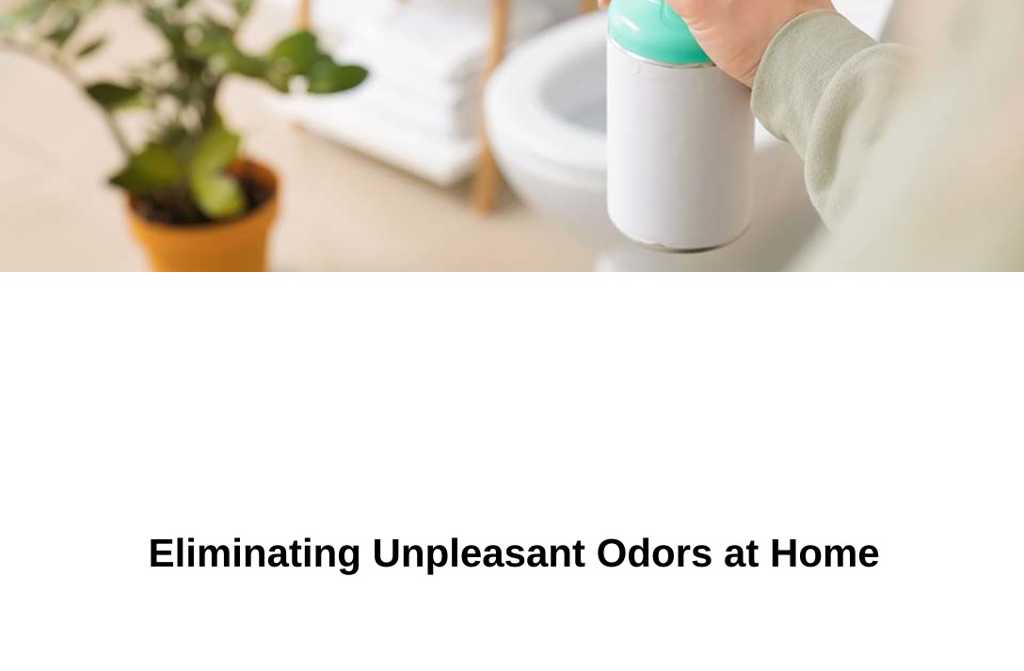**Effective Ways to Eliminate Odors in Your Home: A Step-by-Step Guide**
“That’s life!”—a fitting phrase from Karlsson—perfectly describes the arrival of unpleasant smells in a home. Sources of stench in living spaces can be numerous, and they don’t always come from outside. Sometimes, we neglect hygiene, act carelessly, and then find ourselves pinching our noses. Our sense of smell is especially sharp when we return home from outside, but after a few minutes, our receptors dull. It’s how our body works: the brain “blocks” unpleasant sensations, making it seem like the stench disappears. But it’s an illusion. Here’s how to truly eliminate household odors.
**Causes of Odors in Apartments**
Bad smells don’t appear out of nowhere—they always have a source. Here are common culprits:
– **Spoiled food.** Not everything is stored in the fridge. Fruits and vegetables, for instance, often end up in kitchen cabinets. Check—you might find something spoiled that needs tossing.
– **Pets.** A treasure trove of aromas. No matter how clean cats are, they follow their own rules—sometimes replacing their litter box with shoes, closet corners, or even bedding. Dogs love rolling in foul-smelling substances, then bringing them indoors, convinced it’s a great scent.
– **Old plumbing or clogged drains**—a likely source of foul odors.
– **Neighbors.** Stench can travel through vents, especially in cities with hoarding tendencies. Worse, if someone passes away unnoticed, residents may endure the smell while authorities decide whether to enter the apartment.
– **Hallway odors.** Often from overflowing trash chutes, unbearable in summer—leading many modern buildings to seal them shut.
– **Pollution.** A city problem, with cars, power plants, and factories emitting not just CO₂ but a mix of combustion byproducts.
– **Construction revenge.** A foul prank—workers sealing rotten eggs or dead rats inside walls or vents.
**Effective Solutions for Common Odors**
**Pet urine smells**
For fabrics like bedding or clothes, a thorough wash with detergent and fabric softener, plus an extra rinse cycle, usually works.
– **For furniture and hard surfaces:** Sprinkle baking soda, wipe with hydrogen peroxide, then reapply soda and vacuum after 12 hours. Pre-treat with a vinegar solution (3–4 tbsp per 200 ml water). Iodine, bleach, or potassium permanganate can help too—but chlorine is toxic to pets, and others may stain.
– **Expert tip:** Skip experiments—invest in specialized pet-safe cleaners. Professional cleaning services are pricier but guarantee odor removal and a deep clean.
**Cat and dog odors**
The best fix: visit a pet store for odor-neutralizing sprays. One downside? Large bottles (500–750 ml) for a few spritzes, costing 600–1,000 rubles.
– **DIY methods:** Vinegar (1:4 dilution), baking soda, hydrogen peroxide, or activated charcoal. Avoid masking scents like perfumes—they blend with the stink instead of removing it.
**Smoke smells**
Tough to tackle, especially after fires, when combustion residues embed in walls and furniture.
– Ventilate intensely for hours to clear the sharpest odors.
– Clean with bleach, baking soda, or citric acid, but commercial smoke removers work better—though coverage is limited, so buy multiple.
– Place coffee grounds or vanillin around the house. Eastern markets sell sublimated incense in shapes like cubes or cones, which may help. If all fails, repaint walls and hire deep-cleaning professionals.
**Cigarette odors**
– Air out the room—strong tobacco notes will fade, but a sour undertone lingers.
– Steam-clean furniture (high-power garment steamers work well).
– Wash removable textiles (curtains, couch covers, clothes).
– Do a full clean with vinegar (2 tbsp per water) or household chemicals—first with a damp cloth, then dry.
– Use a tobacco-specific air freshener. Regular ventilation over the next week will handle lingering traces.


Leave a Reply